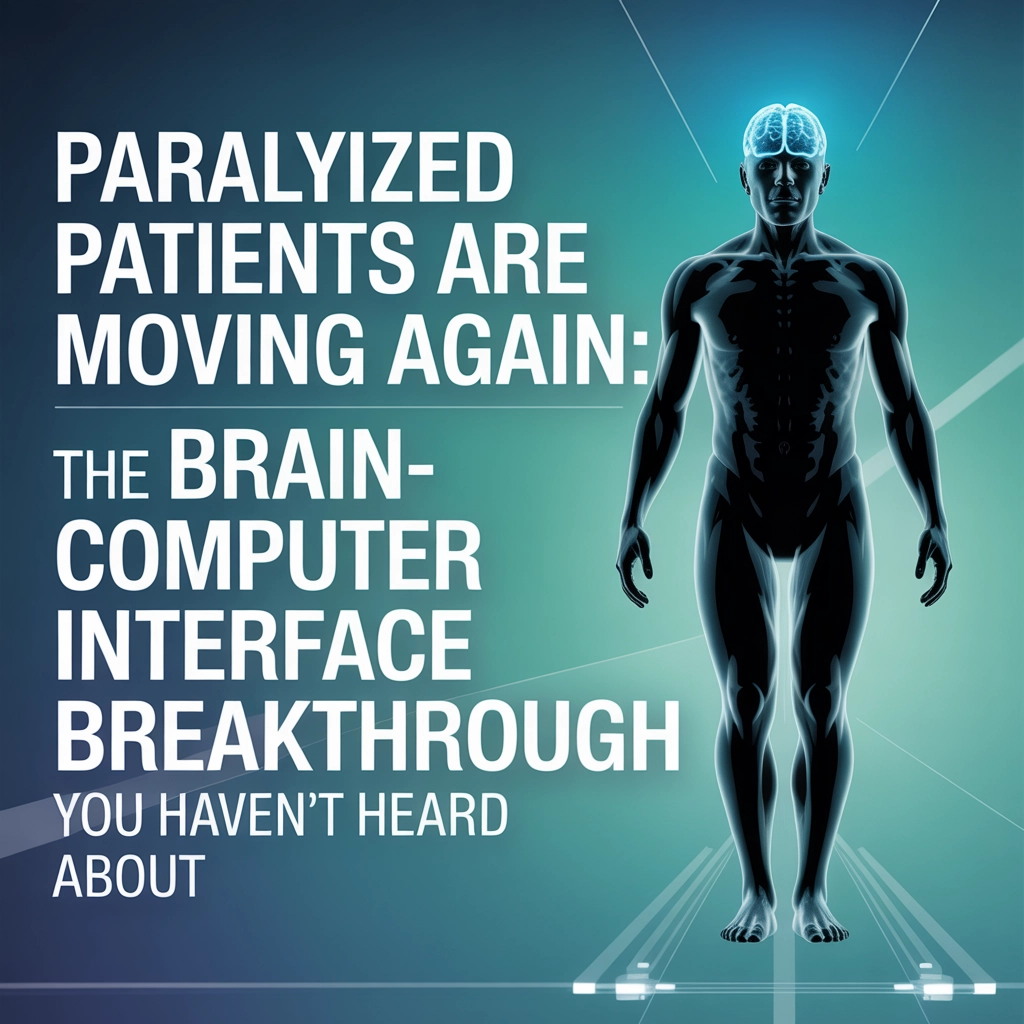Imagine being trapped in your own body. You can think, dream, and feel everything, but you can't move a single muscle or speak a word. For millions of people with paralysis, this has been their reality. But what if I told you that in 2025, scientists have cracked the code to let paralyzed patients control robotic arms and speak again using nothing but their thoughts?
This isn't science fiction anymore. It's happening right now in labs across the country, and the results are blowing everyone's minds.
Your Brain Becomes a Wireless Remote Control
Here's where things get wild. Researchers at UC San Francisco just pulled off something that sounds impossible, they helped a paralyzed man control a robotic arm for seven straight months without any technical hiccups.
Think about that for a second. This guy could grab his coffee cup, move objects around, and drop things wherever he wanted, all by just thinking about doing it. No buttons, no joysticks, no voice commands. Pure thought-to-action.
The secret sauce? An AI system that actually learns and adapts to your brain patterns over time. Previous brain-computer interfaces were like using a flip phone, they'd work for maybe a day or two before breaking down and needing constant repairs. This new system is more like having the latest smartphone that gets better the more you use it.

Dr. Sarah Chen, one of the lead researchers, puts it perfectly: "We're not just reading brain signals anymore. We're creating a conversation between the human brain and artificial intelligence."
But here's the kicker, this technology isn't just sitting in some lab gathering dust. It's being tested on real people right now, changing lives in ways that seemed impossible just a few years ago.
Finding Your Voice Again When Words Won't Come
Now let's talk about something even more personal, speech. If you've ever lost your voice from a bad cold, you know how frustrating it can be. Now imagine never being able to speak again. That's the reality for many stroke survivors and people with ALS.
But scientists have figured out how to turn thoughts into actual spoken words. We're not talking about robotic, Stephen Hawking-style computer voices either. These new systems can match your intended tone, pitch, and even emotional inflection.
Sarah Martinez, a stroke survivor who participated in one of these trials, describes the experience: "For three years, I felt like I was screaming inside a soundproof room. Nobody could hear me. The first time I spoke through the computer and my daughter heard my voice again, we both cried."
The technology works by reading the brain signals you'd normally send to your vocal cords and tongue. Even though those muscles can't respond anymore, your brain is still firing off the same patterns. The AI translates those patterns into speech in real-time, we're talking milliseconds, not minutes.
Here's what makes this breakthrough so impressive:
• Real-time translation: No more waiting 30 seconds for each word to appear
• Natural speech patterns: The AI captures your unique way of speaking
• Emotional expression: You can sound happy, frustrated, or excited
• Learning capability: The system gets better at understanding your specific brain patterns over time
• Wireless operation: No cables or bulky equipment attached to your head
The Surgery That Changes Everything
Let me paint you a picture of what getting one of these brain implants actually looks like. It's not the scary, Frankenstein-style operation you might imagine.
Neuralink's R1 Robot (yes, it's called R1 like something out of Star Wars) can place electrode threads thinner than human hair exactly where they need to go in your brain. We're talking precision measured in microns: that's smaller than the width of a spider's silk.
The Miami Project to Cure Paralysis just became the second location in the US where you can get this procedure done. They're part of Neuralink's PRIME Study, which sounds fancy but really just means they're testing how well these brain chips work in everyday situations.

The whole thing creates a wireless connection between your brain and computers. No more tangled wires, no external hardware hanging off your head. It's like having invisible WiFi between your thoughts and the digital world.
John Thompson, a former construction worker who became paralyzed in a workplace accident, was one of the first to try this technology: "I went from feeling completely useless to being able to control my environment again. I can turn on the TV, send emails, even play video games with my kids. It gave me back my sense of being human."
What This Means for Your Future
Here's what's really exciting: this technology isn't going to stay locked up in hospitals and research centers forever. The improvements we've seen in 2025 suggest we're moving from experimental curiosity to actual medical treatment.
Think about how smartphones went from being luxury items for tech nerds to something your grandmother uses to video chat with her grandkids. Brain-computer interfaces are on a similar trajectory, just faster.
The psychological impact goes way beyond just being able to move things or talk. These technologies are bringing people back into conversations, back into their families, back into society. When you can't communicate or interact with your environment, you start feeling like you're disappearing as a person.

But there's still work to be done. The current systems require surgery, they're expensive, and they only work for specific types of paralysis. Scientists are already working on non-invasive versions that could help people with temporary injuries or conditions like depression and anxiety.
The AI algorithms are getting smarter too. They're learning not just to read your brain signals, but to predict what you want to do next. Imagine a system that knows you want to grab your water bottle before you even think about being thirsty.
We're also seeing integration with smart home technology. Pretty soon, paralyzed patients might be able to control their entire house: lights, temperature, doors, appliances: with nothing but their thoughts.
The era of "thinking it into existence" has officially begun. We're watching the birth of technology that could eventually help anyone enhance their natural abilities, not just people with disabilities.
What would you do if you could control any device in your house just by thinking about it?







